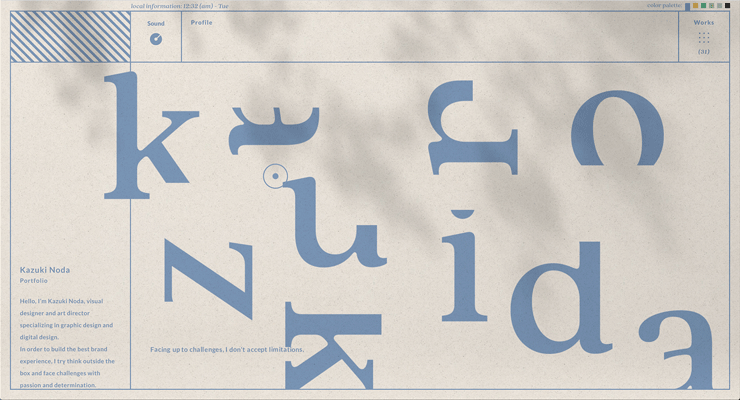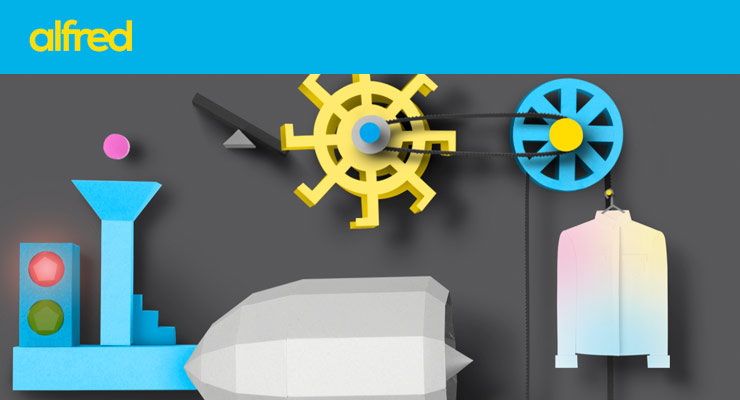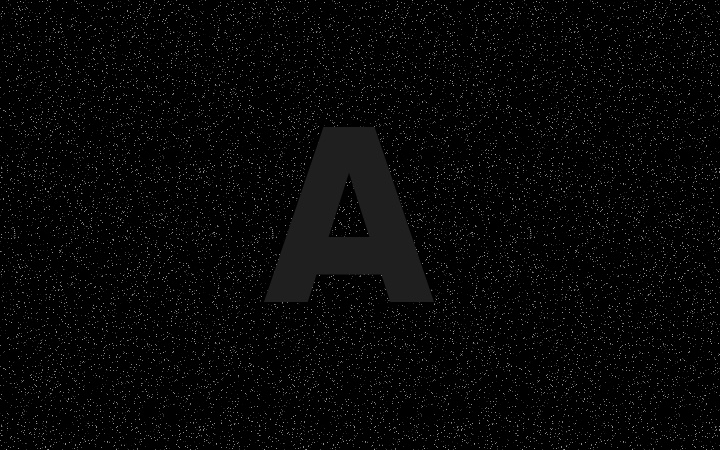Search the Community
Showing results for tags 'webgl'.
-
Hi, I am a back end developer and have very least knowledge of JavaScript but I can understand code. I have been finding out whole day the code or logic used by https://travelshift.com/ they used to create top banner/slider which changes the slide/image by long click (about 1 second). I used chrome extension Wappalyzer and came to know that its using GSAP. I have been finding something similar but could not get any working code example. Can anyone please provide some similar example with code or any article link please. Also I want to know this animation name so I can google it better way. willing to get a response, thanks!
- 9 replies
-
- animation
- transition
-
(and 2 more)
Tagged with:
-
Hi Everyone, I have been working on the project involving WebXR, using ThreeJs and Gsap 3. And I have notice that when you initialize webXR session (clicking on 'Enter VR' button) update of Gsap's timelines just stops. They mention in How to create VR content on ThreeJs' website that you need to call setAnimationLoop() from their renderer and to pass callback and that you can't use window.requestAnimationFrame() function (I need to investigate this topic more). The problem was solved calling gsap.ticker.tick() from the callback function. For testing, I have added listener to gsap.ticker and it was working fine when webXR session is not initialized. Is there a better method to update gsap timelines, and am I missing something? I used Oculus Quest for headset and Oculus Browser which is based on Chromium.
-
So I want to resize my WebGL canvas to be bigger than window.innerHeight but more like document.body.scrollHeight. I also don't want to lose the ration, so I would resize the width by the way (with ratio). I already achieve some sort of resizing, but either the ratio wasn't good or the effect was not on the cursor anymore, like it was some hundreds pixels away from the cursor place.
- 1 reply
-
- javascript
- webgl
-
(and 2 more)
Tagged with:
-
Hi there lovely developer community. I‘m looking for a front end dev to do a cool little website project. It’s something along the lines of: https://croing.com/ It’s just a one pager with 2 other pages. The rest is external links. It’s pretty simple/straightforward in general, I think. But it has some 3D obj or fbx elements which need to spin around and the site should have nice transitions, UI/ rollover animations and feel fluent/responsive. If you know what I mean? I’m a creative designer. Not a developer but I imagine it's WebGL using ThreeJS or some sorts. I have figma design and all the 3D assets etc. ready to go If you are interested please get in touch Thank you very much Sebastian
-
Hello! I'm wondering how to replicate this effect on https://monopo.london/ where the mouseover interacts with the colours. I thought it would be something like this https://tympanus.net/Development/FlowmapDeformation/index.html, but it does not seem like it as in this case, it's a still image. In Monopo London, the mouse was interacting with the colours. Really am dying to find out: 1) What this effect is called. Is it repulsion effect? 2) How do I make this? (e.g., use Pixi.JS or WebGL... or?) 3) Are there any tutorials to watch/learn about this mouseover effect together with the glowy background? Any help would be greatly appreciated!
-
Hi! I've come across this especially unique combination of effects, and have been left in both awe and pain trying to figure out how to replicate such a complex stringes of elements. I've already done some research to figure out the basics of its mechanics, but as someone new to coding, my understanding is limited still. The site and effects in question are: Home Page - https://panamaera.fr/ 404 Page - https://panamaera.fr/404 About Page - https://panamaera.fr/about There seem to be two effects at play. A Canvas over images/videos, that generates a smokey distortion effect, rendering the smoke depending on what visual is underneath the canvas. The Canvas remains active between pages, registering a page change just like a visual change in a video, creating the fading smoke distortion transition between pages and their visual material. A mouse hover effect with smoke & distortion. The smoke is moving in synch with the Canvas' smoke, while the pointer clears the Canvas from over the image and lightens it a bit. On here https://www.awwwards.com/sites/panamaera, the site is tagged as having WebGL, GSAP Animation, ReactJS, GLSL used on it, however I'm not looking to learn everything about these tools, only whats specifically needed to recreate these effects. As I am looking to learn to recreate this effect, my questions are: What coding methods and techniques are they based on (within the world of the above mentioned tools)? What are the exact & relevant coding topics I should look for education on? How would you go about recreating these effects?
-
Tweens special EaselJS-related properties for things like saturation, contrast, tint, colorize, brightness, exposure, and hue which leverage EaselJS's ColorFilter and ColorMatrixFilter (see http://www.createjs.com/#!/EaselJS for more information about EaselJS). Of course you don't need the plugin to tween normal numeric properties of EaselJS objects (like x and y), but some filters or effects require special manipulation which is what EaselPlugin is for. Currently it only handles special properties related to ColorFilter and ColorMatrixFilter, and it can tween the "frame" property of a MovieClip. GreenSock's EaselPlugin exposes convenient properties that aren't a part of EaselJS's API like "tint", "tintAmount", "exposure", and "brightness" for ColorFilter, as well as "saturation", "hue", "contrast", "colorize", and "colorizeAmount" for ColorMatrixFilter. Learn more in the EaselPlugin documentation.
-
-
-
- pixi
- js.timelinelite
-
(and 5 more)
Tagged with:
-
Hello everyone! I had hoped to unveil this animation to you all when it was completed and running smoothly. Thanks to the the shear volume of detailed answers on this forum and the amazing community of contributors behind it, someone who has no experience with JS , HTML, or even CSS can learn without even asking a question. You should all know how amazing your contributions to this forum are, and I hope this conveys the genuine appreciation from this lurker/beginner. I think it was Craig who said that he started learning JS by copying and pasting, well thats exactly how I learned to make this animation. It's a bit of a Frankenstein's monster, but I understand what I built. Unfortunately, I will have to interrupt my gushing to also add a question. Although my SVG animates exactly how I want, the rendering is obviously jittery. From what I can tell this is in large part due to the strain put on the browser attempting to render: ALL these filters and alpha changes 48 objects simultaneously What can I do to optimize the rendering efficiency of my animation? As far as I've read from this forum and outside sources I have a few options: Slim down and clean up my script. (However, this doesn't fix the rendering problems) Combine GSAP with another js rendering library like three.js or pixi.js (This would fix the rendering strain on the browser. But where to even begin? Also from what I gather rendering SVG paths in WebGL is more challenging, as the WebGL API is primarily built for rendering many triangles.) I understand if what I'm asking might be outside the scope of GSAP. Still a thank you is necessary for getting me to this point.
-
Hi, Recently, I'm trying to explore slightly more advanced animations. I'm scoured the web, forums for any examples, but it seems I'm stuck. Wondering if anyone can point me in some directions. I'm trying to achieve an similar effect like this -> https://looi.co/ But, probably not as complicated as this site. I believed there's certain level of 'voodoo' in this lol. The example above is using Three.js, nt sure if greensock is being used. I'm looking to do some interactions, and gravity in my visualisations. See, my attached design -> So the letter in the center will be like a container where the particles will not move in or interact. And when I move my mouse on the screen there will be a like a repelling effect on the particles, like the website above. So in my head right now, my train of thought is like 1) Generate the particles moving inside the viewport (bouncing when reach the end or something) 2) Then animate the particles to move using Math.random or sin or cos (Not sure about this, I researched on sin and cos to make your motions looks more natural yet random, but haven't found an article to clearly explain how it works, what kind of maths formula should i be using?) 3) When the particles reached the letter, it bounces off (I assume you have to push it away with a if/else statement? So do I implement a collision library or something ? ) I'm still looking into p5.js (which is based on processing) and pixi.js (which is frequently recommend in this forum). But I'm unsure if pixi.js is to be compare similarly to p5.js. I guess I will definitely need to use webgl since there're tons of particles involved. The pixi examples website seems to be extremely basic. Are there websites that explores more complicated stuffs like http://openprocessing.org/
-
Hey guys! I have something I'd like to implement which you could consider to effectively be a floor plan for a venue. I've advocated GSAP for a while now and so thought I'd explore what was available for it. I like the look of draggable a lot. Effectively I'd like some advice. I want to create an area on the screen and that can zoom/pan and allow me to add elements to a grid in the form of differently shaped tables. The size of the floor can grow (ad infinitum) depending on the positioning of tables, but there will always in practical terms be boundaries to the floor. A table may have dimensions of let's say 5x5 (as in grid squares) and I would like to be able to drag & rotate them as part of Angular 2 app, with them snapping to the grid. Draggable has a lot of the features I require. I'm wondering whether anyone thinks I could suitably achieve this solely with draggable and a bit of vanilla JS, whether using draggable alongside canvas/webGL would be more appropriate, or whether it wouldn't fit my needs at all. Any recommendations here would be greatly appreciated. I would love it if anyone knew of any examples like this too, I've searched around but not found anything too similar as yet. Many thanks, Alex
-
Hi all, first of all congrats on the great animation engine. I am using GreenSock, mainly TimelineMax and TweenMax for timing and tweening positions, rotations etc. of my WebGL / ThreeJS scene objects. The resulting format is always an interactive (Apple) iBook for children - basically a compressed website that runs with a WebKit standard similar to the one used in Safari Mobile. Performance was never a real issue until a colleague recently discovered that certain animations freeze or behave different (jumpy, stuttery) after running for several minutes (about 10-15 minutes dependent on the device) while others still run smoothly. It occurs only on the mobile device and only on generations < iPhone 6. What helps is to throttle the TweenMax ticker fps down to 30, but of course this doesn't look as smooth. I also tried playing with the lagSmoothing - with no success. Do you have an idea where these freezes come from? Since they occur only after a certain amount of time.. could it be that the JS execution stack suddenly becomes too big because the device isn't really capable of doing 60fps? Turning RAF on and of also didn't change much. Thanks for any hints or input.
- 10 replies
-
- performance
- lags
-
(and 6 more)
Tagged with:
-
Hello, I am looking if it possible to animate matrix values directly like with the TransformMatrixPlugin. Values would then be updated for each frame to webgl rendering using the Flash’s WebGL Runtime API. https://helpx.adobe.com/flash/webgl-runtime-api-help/matrix.html Do you reckon this approach can work? I am looking for a workflow which would allow to reuse Flash IDE assets exported to WebGL, then animate them via GSAP but still render everything to WebGL via Flash’s WebGL Runtime API. The unicorn! GSAP is great for manipulating object properties. Thanks.
-
Looking for a freelancer who can / has made something similar to this before... http://visualizer.halowaypoint.com/ Interested?












